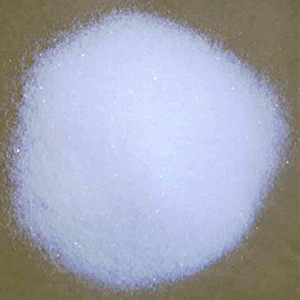
Identification:
A: A solution (1 in 50) responds to the tests for Calcium.
B: Infrared Absorption 197K.
C: Dissolve a quantity of it in water to obtain a test solution containing 10 mg per mL. Similarly prepare a Standard solution of USP Calcium Lactobionate RS in water containing 10 mg per mL. Apply separately 5 :L of the test solution and 5 :L of the Standard solution to a suitable thin-layer chromatographic plate coated with a 0.25-mm layer of chromatographic silica gel. Dry the plate in a current of cool air. Place the plate in a suitable chromatographic chamber lined with filter paper and previously equilibrated with a solvent system consisting of a mixture of alcohol, water, ethyl acetate, and ammonium hydroxide (50:30:10:10). Develop the chromatogram until the solvent front has moved about three-fourths of the length of the plate. Remove the plate from the chamber, and dry at 100 for 20 minutes. Allow to cool, and spray with a spray reagent prepared as follows. Dissolve 2.5 g of ammonium molybdate in about 50 mL of 2 N sulfuric acid in a 100-mL volumetric flask, add 1.0 g of ceric sulfate, swirl to dissolve, dilute with 2 N sulfuric acid to volume, and mix. Heat the plate at 110 for about 10 minutes: the principal spot obtained from the test solution corresponds in color, size, and RF value to that obtained from the Standard solution.
Specific rotation: between +22.0 and +26.5 .
pH: between 5.4 and 7.4, in a solution (1 in 20).
Halides: A 1.2-g portion tested as directed under Chloride shows no more turbidity than corresponds to 0.7 mL of 0.020 N hydrochloric acid (0.04%).
Sulfate: A 2.0-g portion dissolved in boiling water shows no more sulfate than corresponds to 1 mL of 0.020 N sulfuric acid (0.05%).
Heavy metals: Mix 1 g with 4 mL of 1.2 N hydrochloric acid, add water to make 25 mL, warm gently until dissolved, and cool to room temperature: the limit is 0.002%.
Reducing substances: Transfer 1.0 g to a 250-mL conical flask, dissolve in 20 mL of water, and add 25 mL of alkaline cupric citrate. Cover the flask, boil gently for 5 minutes, accurately timed, and cool rapidly to room temperature. Add 25 mL of 0.6 N acetic acid, 10.0 mL of 0.1 N iodine VS, and 10 mL of 3 N hydrochloric acid, and titrate with 0.1 N sodium thiosulfate VS, adding 3 mL of starch as the endpoint is approached. Perform a blank determination, omitting the specimen, and note the difference in volumes required. Each mL of the difference in volume of 0.1 N sodium thiosulfate consumed is equivalent to 2.7 mg of reducing substances (as dextrose): the limit is 1.0%.
Assay:
Dissolve about 0.8 g of Calcium Lactobionate, accurately weighed, in a mixture of water and 3 N hydrochloric acid (150:2). While stirring with a magnetic stirrer, add about 15 mL of 0.05 M edta disodium VS from a 50-mL buret. Add 15 mL of 1 N sodium hydroxide and 300 mg of hydroxy naphthol blue, and continue the titration to a blue endpoint. Each mL of 0.05 M edta disodium is equivalent to 39.53 mg of C24H42CaO24.2H2O.
DESCRIPTION
Calcium Lactobionate occurs as a white to cream-colored, free-flowing powder. It readily forms double salts, such as the chloride, bromide, and gluconate. It is anhydrous when obtained by spray-drying, or the dihydrate when obtained by crystallization. It is freely soluble in water, but insoluble in alcohol and in ether. It decomposes at about 120°. The pH of a 1:10 aqueous solution is between 6.5 and 7.5.
Function: Firming agent in dry pudding mixes; nutrient.
REQUIREMENTS
Labeling: Indicate whether the product has been obtained through spray-drying or from crystallization.
Identification
A. The infrared absorption spectrum of a potassium bromide dispersion of the sample, previously dried at 105C for 8 h, exhibits relative maxima at the same wavelengths as those of a similar preparation of USP Calcium Lactobionate Reference Standard.
B. A sample gives positive tests for Calcium.
Calcium Content: Not less than 5.05% and not more than 5.55% of calcium (Ca), calculated on the dried basis.
Halides: Not more than 0.04%.
Lead: Not more than 2 mg/kg.
Loss on Drying: Not more than 8.0%.
Optical (Specific) Rotation [α]D20C: Between +23° and +25°.
Reducing Substances: Not more than 1.0%.
Sulfate: Not more than 0.7%.